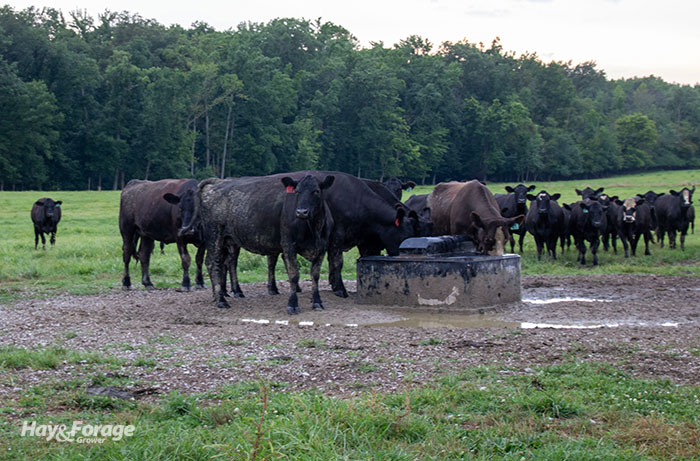Avoid these muddy misfortunes |
| By Amber Friedrichsen, Associate Editor |
|
|
 April showers bring April mud. Even though that’s not how the saying typically goes doesn’t mean it isn’t true. Mud doesn’t just pose a physical challenge to cattle plodding through uneven stands. It can cause concerns like foot rot and reduced insulation from matted hair in cows and naval infections in calves. Moreover, mud can carry soil-borne pathogens that persist in high-moisture environments and infect animals that consume contaminated forage or hay. In an article from Penn State University, Robert Van Saun, an extension veterinarian, and Leanna Duppstadt and Zachary Curtis, extension educators, note clostridia is one of the most common pathogens found in soil, as well as poorly fermented feed. If cattle are exposed to clostridia, they can develop diseases like botulism, blackleg, malignant edema, and listeria. Feed intake downfalls Overgrazed pastures are most susceptible to mud formation where the soil is overexposed. Forage growing near these bare spots is also at greater risk of mud pollution when soil splashes onto leaves during heavy rains. Moreover, high-traffic areas like those around bale feeders, waterers, mineral tubs, and gates are more likely to become rugged with mud, creating an obstacle course for cattle trying to navigate the facilities. “Research has shown that mud up to 8 inches deep will decrease feed intake by up to 15%, while mud up to 10 inches deep can decrease intake by as much as 30%,” the authors write. “This results in reduced gains, lower milk production, and an overall decrease in animal performance.” Establishing a heavy-use area or sacrifice lot to relocate cattle during inclement weather will help alleviate some mud-induced issues. However, a more sustainable solution would be to rotationally graze cattle throughout the season to encourage higher stubble height and better ground cover. The authors recommend rotating animals to new paddocks when grass height is about 4 inches and regularly assessing stocking rate to ensure forage availability can satisfy animal needs. Over time, forage in a strategically managed pasture will develop a more dynamic root system, which should promote better soil water infiltration to combat mud as well. “There will be less exposed ground to splash mud onto leaves, the larger root system of grass will be able to absorb more water, and those roots will also help stabilize the soil structure, allowing for better water penetration through the soil profile,” the authors state about rotational grazing. Stored bales suffer While mud may have a direct impact on livestock in a pasture, it can also have long-term effects on hay that is stored outside. Bales stored in low-lying areas or sites with poor drainage can also be splashed with soil when it rains or soak up muddy water from the ground. The authors note this cannot be prevented by simply putting bales on a patch of dense grass, as mud can still form when plants eventually die out. “Store hay on pallets to avoid bales lying in mud during wet periods, or store them indoors,” the authors suggest. “Remove hay from the fields where they were baled, especially if those fields will be wet during certain times of the year, or if you are in a flood plain.” With first cutting approaching for many producers, the authors point out that the same soil-borne pathogens found in mud can be introduced to hay and haylage in the form of ash. Raise the cutterbar height to 3 or 4 inches so not to scalp uneven ground. Doing this will also leave enough stubble to keep cut forage off the soil — and mud — while it is drying. Then, consider applying an inoculant to chopped forage to prevent clostridial fermentation in hayalage. The authors note there are no treatments for many of the diseases caused by clostridia, but there are some preventative vaccines. Nonetheless, aim to minimize mud in spring pastures and stored hay to avoid the consequences that come with contaminated forage. |
